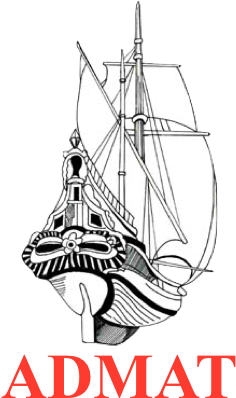
Team Leader Raimund Krobe, with Jonathan Cho Fook Lun and Petwr Heyes, carefully cutting one of the ghost concretions under the watchful eyes of staff member May Loo

One of the possible plane blades with a white French faienceware beaker concreted to it, having a section cut

The underside of the possible plane blades with a white French faienceware beaker concreted to it, having a section cut

Close up of the French Faienceware beaker which at this point was still concreted to the ghost concretion

A cross section of the cut showing the void

Topside of another ghost blade being cut

The underside


During the examination some fibrous residue was found in the concretion. This gave the appearance of a type of felt, which might have been used to wrap the item

Clearly orriginaly the shape of the object was bent

From a side profile a series of iron nails can be seen in the concretion

The cross section of the ghost

A cross section of the ghost item which came close to the beaker.

Some of the concretion has been carefully removed from the French faienceware beaker, leaving a "tide mark"

Some concreted nails next to the items, forming large ghosts

Showing the cross sections of the iron object in a diferent cut along the item

The outer shell of the concretion was intact and strong

Further cuts showing the square sides of the original item

Cross section showing two items in the concretion. As further cuts were made the ghost items got closer

In the void there were holes which went through the iron object which were now occupied by concretion

Here a depression can be seen above the void

The depression is now clearly an item of its own at a further cut 4 cm away from the last

One can see right through the ghost along the longitudional axis

The third item waiting to be examined

The underside

The fourth concretion to be examined but not cut, using the other cuts as a basis of the analysis

A diferent angle

Maritime archaeologist Wesley cleaning outtheresidue of the iron from the ghosts




























